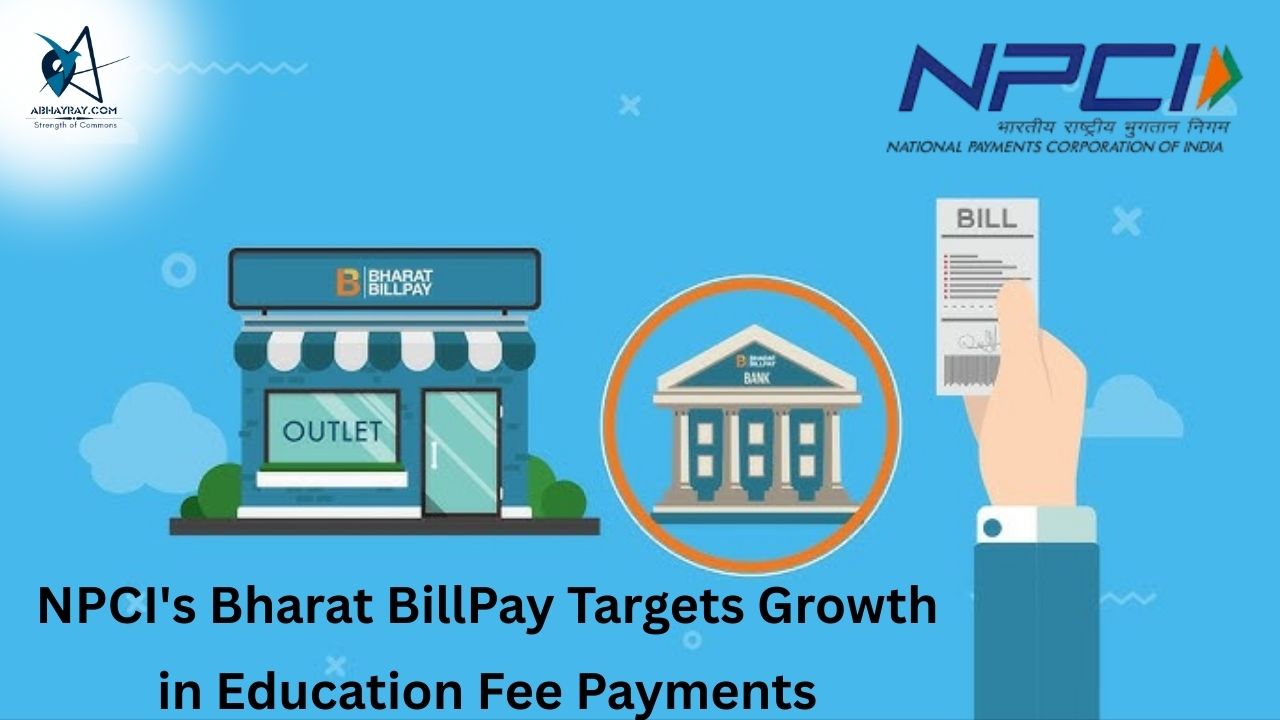Introduction
The National Payments Corporation of India (NPCI), a key player in the country’s payment ecosystem, has identified a significant growth opportunity in the digitization of education fee payments through its Bharat Bill Payment System (BBPS). The shift toward digital payments in various sectors has been swift in recent years, but education remains one of the more resistant industries to change. The government’s push to accelerate digitization in this space, however, has opened the door for platforms like Bharat BillPay to streamline the process and modernize how educational fees are paid across India.
The Bharat Bill Payment System (BBPS)
The Bharat Bill Payment System (BBPS) is a comprehensive, interoperable, and accessible bill payment platform launched by NPCI under the guidance of the Reserve Bank of India (RBI). The BBPS ecosystem provides a one-stop solution for paying a wide variety of bills such as utilities (electricity, telecom, DTH, gas, water), insurance premiums, housing society maintenance, hospital bills, EMIs, and more. What sets BBPS apart is its ability to work with over 68 banks, 10+ payment apps, and a network of more than 2.5 lakh retail agents across India. This makes it highly accessible for consumers and ensures that payments are processed quickly, with instant confirmation and guaranteed settlement to billers.
BBPS has already transformed how utility bills are paid, but the education sector represents a significant untapped opportunity. Education is a critical part of the economy, with over 300 million students enrolled in around 1.4 million schools and 1,100 universities across India. The scope for bringing education fee payments into the digital fold is vast, and NPCI Bharat BillPay is actively working to make that happen.
A New Focus: Education Fee Payments
Digitizing the education sector’s fee payment system has been a slow process. While many sectors have embraced digital payments in the past few years, education has lagged behind. Traditionally, fees are paid through bank branches or institutional websites—systems that often struggle to handle the volume of transactions that accompany the growing student population in the country. The current methods are often cumbersome, time-consuming, and not designed for handling large volumes of payments efficiently.
The slow pace of digitization in education, despite the clear benefits, is largely attributed to the challenges of transitioning from manual procedures and outdated infrastructure. Educational institutions especially smaller private schools—often lack the resources to build or maintain modern digital payment systems. As a result, the industry remains heavily reliant on manual payment methods, including bank drafts, cheques, and cash transactions. This presents an opportunity for Bharat BillPay to fill the gap by offering a secure, standardized, and interoperable platform that addresses both the needs of institutions and the demands of students and parents for a more convenient and efficient payment system.
Government Push and the Role of Bharat BillPay
The Indian government has recognized the importance of digitizing the education sector and has made efforts to encourage this transition. Last year, the government mandated that central government schools must enroll in Bharat BillPay, and this initiative was widely regarded as a success. This year, the focus has shifted to including private educational institutions on the Bharat Connect network. Bharat Connect, the consumer-facing platform of BBPS, enables students and parents to make fee payments through popular payment applications such as Google Pay, PhonePe, or Paytm. This will ensure that payments are quick, easy, and transparent, eliminating the bottlenecks often associated with traditional methods.
The government’s push, coupled with the widespread adoption of digital payment methods in India, has paved the way for the digitalization of education fee payments. Bharat BillPay’s entry into this space is expected to address longstanding challenges and simplify institutional collections, which have traditionally been inefficient and opaque. By digitizing fee payments, Bharat BillPay can help educational institutions ensure that their payment systems are more transparent, secure, and streamlined.
The Potential of Bharat BillPay in Education
According to reports, there are over 1,100 universities in India, but only about 30 to 40 are currently integrated with the Bharat Connect platform. The low adoption rate suggests that the education sector has been slow to embrace digital payment solutions. However, with over 300 million students enrolled in the country’s schools and universities, the opportunity for Bharat BillPay to expand its reach is substantial.
The push for digital payments in education is not just about convenience for students and parents—it also presents a significant opportunity for institutions to improve operational efficiency. By moving payment collections onto a standardized platform like Bharat Connect, schools and universities can reduce the administrative burden associated with manual payment processes, improve cash flow management, and provide a more transparent fee structure for students and parents. The digital infrastructure also ensures that institutions can handle large volumes of transactions without facing the technical glitches or delays that have traditionally plagued their legacy systems.
One of the key advantages of Bharat BillPay is its interoperability. Educational institutions can raise fee requests on the network, and parents or students can choose from a variety of payment platforms to complete the transaction. This flexibility ensures that the system is not restrictive and can cater to a broad range of consumers with different preferences.
Challenges and Opportunities
Despite the clear benefits, there are challenges to integrating education fee payments into Bharat BillPay. Educational institutions, particularly smaller ones, may lack the technical expertise and infrastructure required to adopt such a system. Furthermore, there are concerns about data privacy and security, which are crucial when dealing with sensitive financial information.
However, the benefits far outweigh the challenges. As the government continues to encourage digitization in the education sector and more educational institutions come on board, Bharat BillPay’s role in simplifying fee collection and streamlining payments will become increasingly vital.
Conclusion
The education sector in India is ripe for transformation, and Bharat BillPay is well-positioned to lead the way. With its secure, standardized, and interoperable infrastructure, Bharat BillPay is set to revolutionize how education fees are paid, bringing transparency, efficiency, and convenience to millions of students and parents across the country. As more educational institutions embrace digital payments, the future of education fee collections in India looks increasingly digital.
GMICapitals.com RaysVeda.com GetMyStartup.com LawCanal.com GetMyIndia.com ZinCob.com Angeltors.com

